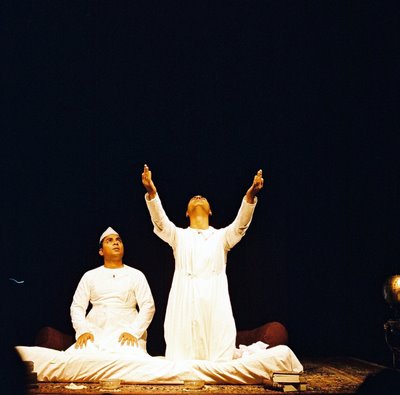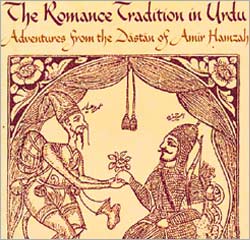Dastangoi—the art of reciting dastans, traditional romantic epics that are related to the 1001 Arabian Nights and Panchatantra—is being revived, says Scherazade Kaikobad.
Many of us in the post-Independence generations may be forgiven for believing that the Indian epic tradition is largely restricted to the Ramayana and the Mahabharata. Ever since the nationalist movement and the search for a unitary 'national culture' began, there has been a systematic marginalisation of various cultural forms, including 'dastangoi,' the fine art of reciting 'dastans' or medieval romantic epics.
From the coffee houses of Tehran to Delhi's Jama Masjid, from the Qissah-Khvani Bazaar in Peshawar to the Thursday evening salons of the Urdu poet Ghalib and the courts of the Mughal emperors, from far-flung Bosnia to Indonesia, dastangoi has had a rich tradition, from the ninth century to the turn of the 20th century.
Dastans were derived from a common pool of stories, narrative techniques and literary styles. The Panchatantra, Jataka Tales, 1001 Arabian Nights, Shah Nama and other romances are part of this vast pool, created by the swirling currents of translation.
At the height of its popularity in the late 19th to the early 20th century, the Indian dastan tradition was both an oral performance, as well as a written literary form. A 19th century print version of the Dastan-e-Amir Hamza ran into 46 volumes of about 900 pages each, making it possibly the single longest romance in the world.
The dastan influenced not only Urdu literature, but possibly also Parsi theatre, and through it, Hindi cinema. How is it, then, that this once-thriving form has been virtually obliterated from the popular imagination? That is what Mahmood Farooqui, the Delhi-based columnist, writer and actor, has researched and attempted to redress. Along with co-actor and writer Danish Husain, he is currently treating Mumbai to the lost art of dastangoi. They will perform at Prithvi Theatre on July 1 and 2.
Based on excerpts from the Tilism-e-Hoshruba (the enchantment that steals away the senses), stories from the Dastan-e-Amir Hamza, this modern-day dastangoi strikes a fine balance between narration and dramatisation.
While the stories recount the adventures of Amir Hamza, the selected episodes deal with the enchantment cast by Afrasiyab Jadu, the emperor of sorcerers, and the havoc wrecked by Amar Aiyyar (who is not exactly a Tam Bram, but a trickster).
While it helps to know Urdu, the performance remains accessible and funny. Says Danish Husain, “Apart from dramatic and linguistic skills, dastangoes must improvise as poets.”
Says Mahmood Farooqui, “With its freewheeling fantasy, the dastans' fall from literary favour coincided with a period when Indians were looking to match Dickens' realism. The Indian middle class is influenced by Victorian moral codes, so the humour in dastans was considered vulgar. Dastangoi has always been high-class masala entertainment.”
Dastangoi, Prithvi Theatre, July 1 and 2, 9pm
PS: This article was published in The DNA Newspaper, a Mumbai based newspaper, in the Salon section; edition dated July 01, 2006.










